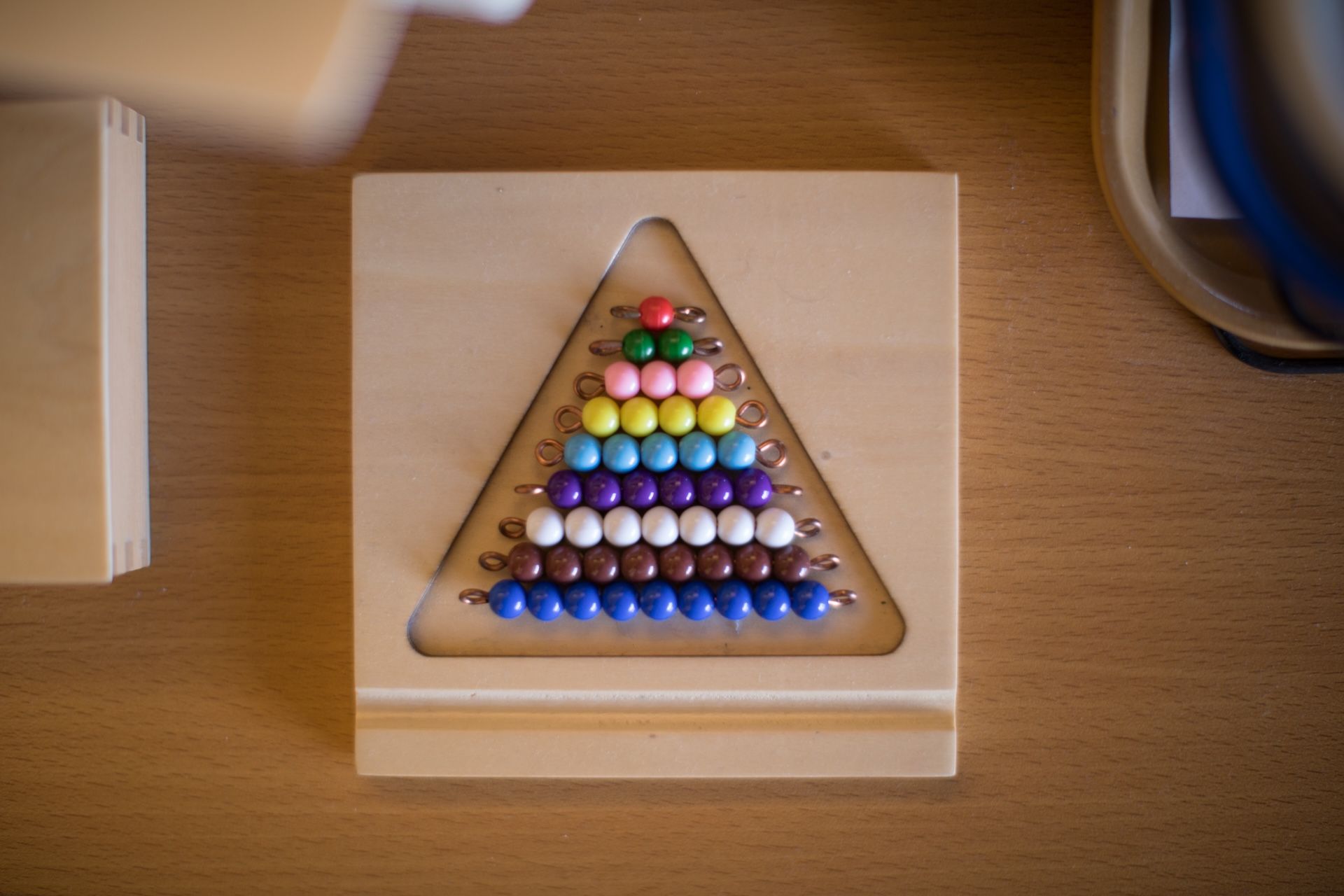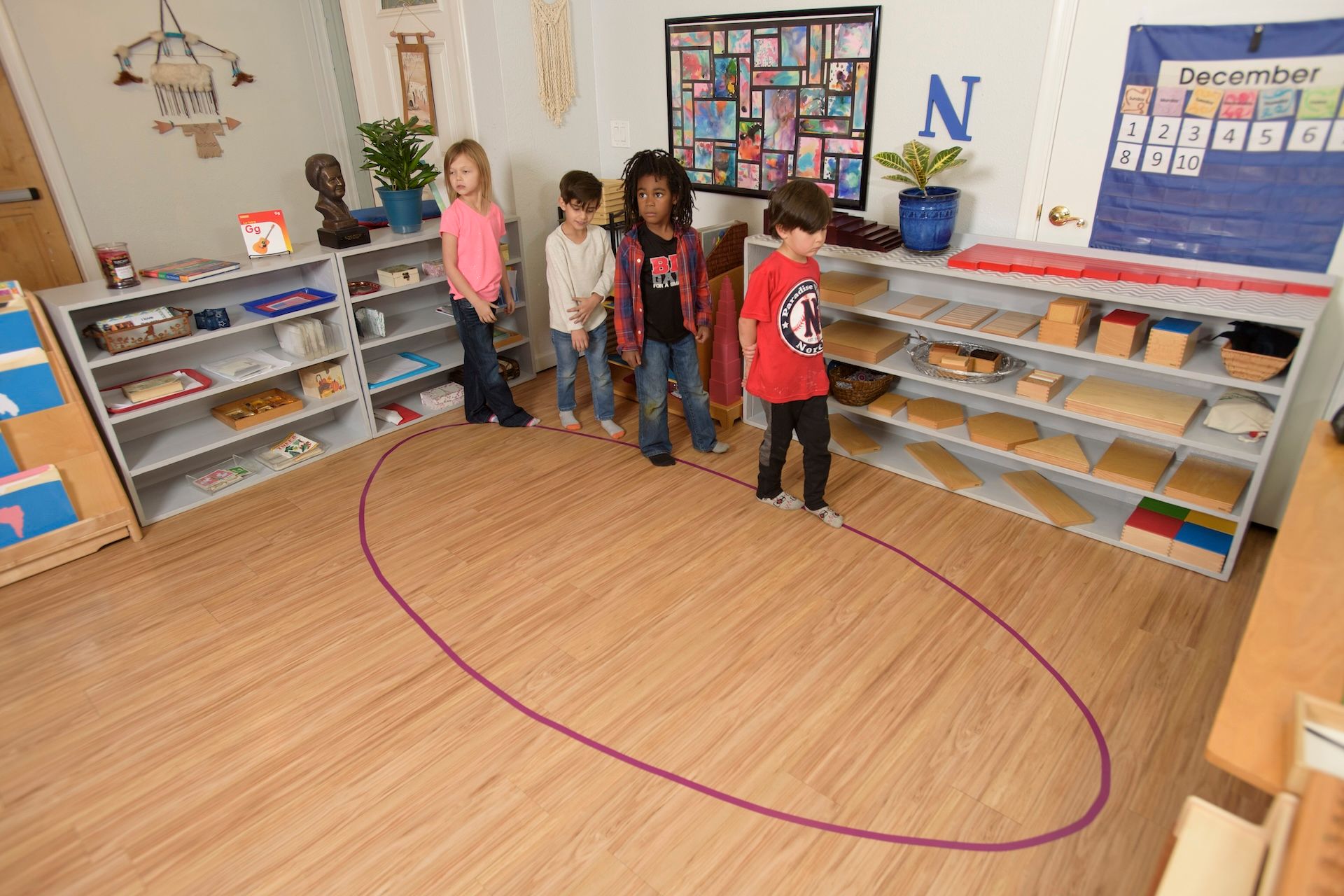There’s an increasing body of research indicating that writing is a brain-training exercise that improves young and old minds alike. For young children, learning to write by hand early on improves motor skills, supports language development, and helps their brains learn. Handwriting is a valuable skill, and Montessori education recognizes this by focusing heavily on lettering, with a special emphasis on cursive writing.

1) Refines Motor Skills
It takes time for children to reach the point where they have the motor skills necessary to hold a pencil and hand write letters. You can help them with this at home by giving them opportunities to draw shapes using finger paints, chunky chalk, or pebble shaped crayons.
Once kids start writing letters by hand, their motor skills just keep improving. Handwriting requires and develops fine motor skills in the hands and fingers, as well as hand-eye coordination. As your child progress through handwriting exercises, they’ll develop a high-level of handwriting skill and their own unique style of legible, beautiful handwriting.
2) Builds Language Skills
Once a child in a Montessori school begins writing by hand, they also begin reading. Rather than focusing on teaching children to read and write, we try to let them discover reading and writing side-by-side. Learning both at once supports children as they continue developing their reading comprehension and other language skills.
Handwriting can also improve the quality of a student’s writing. Here’s just one example. Research by Virginia Beringer , a professor of educational psychology at the University of Washington, demonstrated that children could write longer essays in less time when they wrote by hand instead of using a keyboard. The handwritten essays also included more complex ideas and sentences.
3) Enhances Neural Activity
Handwriting engages the brain’s learning centers in a way typing simply does not. A study published by Indiana University compared MRI scans from two groups of children. One group was asked to look at letters, while the other group was asked to print them by hand. Scans of the children who practiced handwriting showed more enhanced, “adult-like” neural activity.
Writing by hand can also make learning easier. There’s evidence that writing by hand increases learning comprehension even on into adulthood. Three studies conducted by Pam A. Mueller and Daniel M. Oppenheimer found that students who took notes by hand performed better on conceptual questions than students who typed their notes. Students who write by hand tend to engage more areas of the brain and process information more deeply than those who type.
While handwriting is still taught in many traditional educational institutions, it’s often limited to only an hour of instruction per week. That’s not enough time to really master a skill that’s much more valuable than you might think in this age of technology and typed communication. By continuing to teach handwriting, Montessori education provides tremendous benefit to its students now and in their future lives.
The post 3 Ways Writing By Hand Trains the Brain appeared first on Pebblecreek Montessori.
Hours
MONDAY - FRIDAY
HALF DAY: 8:30a – 12 noon
ACADEMIC DAY: 8:30a – 3:30p
EARLY CARE: 7:00a – 8:30a
AFTER CARE: 3:30p – 6:00p
OFFICE: 8:00a - 4:00p
Programs
Connect
Pebblecreek Montessori




